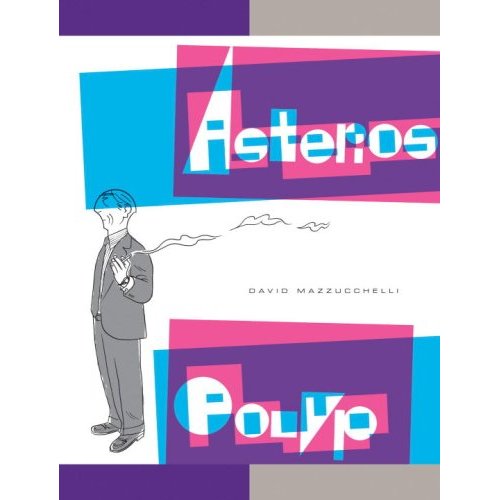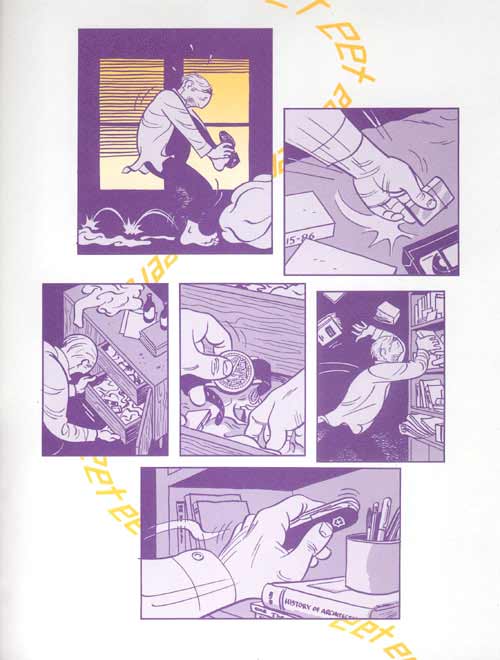Asterios Polyp
/
To say that David Mazzuchelli’s new graphic novel Asterios Polyp is, at times, a highly experimental narrative that explores how our own self-perceptions affect and are affected by those around us makes it sound like an impenetrably abstract chore, when it is most certainly not. Conversely, describing it as a story about an big-city intellectual who begins a new life in a small town and is forever changed by the people he meets there makes it sound like quirky, shallow, feel-good junk food, when it’s not that either. Somehow, Asterios Polyp straddles these two extremes masterfully, and the result is a book that works like a charm on two simultaneous levels; Mazzuchelli plays with the cartoon form in several unexpectedly thrilling and ingenious ways, challenging himself and the reader, while delivering a fully fleshed-out narrative filled with memorable characters and episodes that answers all our questions while leaving us wanting more.

Mazzuchelli, best known as Frank Miller’s artistic collaborator on Daredevil: Born Again and Batman: Year One, abandoned the capes-and-tights scene as the 1980s ended and reinvented himself as an alternative comics artist, sporadically appearing to adapt Paul Auster’s novel City of Glass to comics and to self-publish the anthology Rubber Blanket. With Asterios Polyp, Mazzuchelli seems to have taken what he learned from both alternative and mainstream comics and fused them together into an invigorating new style. Polyp begins as the title character, a renowned professor of architecture whose acclaimed designs have never actually been built, loses everything he owns in an apartment fire on his fiftieth birthday. On a whim, he leaves New York with only the clothes on his back, finally ending up in a rural town called Apogee. As he begins a new life as an auto mechanic, Polyp’s history is filled in with a series of flashbacks detailing his academic career and failed marriage to Hana, an abstract sculptress. As Polyp reconstructs himself as a person, he eventually realizes he needs to leave Apogee behind and return to his old life to address his past mistakes.

Most fans remember Mazzuchelli for the gritty, realistic style he employed in Batman and Daredevil, but that was two decades ago. These days, his sparse linework is more reminiscent of Al Hirschfeld or Chester Gould. The muted, often symbolic colour palette of Asterios Polyp adds further layers of meaning. However, for all of the high-art trappings on display, there is plenty of perfectly relatable relationship drama and lowbrow jokes too. Characters have names like Willy Illium and Lotta Latte, Polyp’s employer mangles countless phrases (he admits that his wife wants him to do more “male bondage” stuff), and there’s even a fart joke at one point. Mazzuchelli’s story is so thoroughly planned out and delicately constructed, you’ll find yourself flipping back through it to glean the significance of various items, like the three things Polyp rescues before his apartment burns down. Mazzuchelli melds mainstream and alternative storytelling in a way that’s more successful than I’ve ever seen, and the result is challenging yet accessible, intellectual yet emotional, highbrow yet lowbrow. I read all 344 pages in one sitting, and I wanted to read it again almost as soon as I was done, knowing that there were tons of details and nuances that I wouldn’t appreciate until a second reading. Mazzuchelli might well disappear for another decade now, but if he does, I sincerely hope he brings another book like Asterios Polyp with him when he returns.




